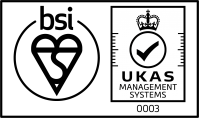The UK government has made significant strides towards creating a carbon-neutral economy as part of the national NetZero 2050 strategy. As a result, halogen light bulbs have been banned, with fluorescent light bulbs predicted to follow. Therefore, every business must explore new sustainable methods of maintaining operations to ensure our natural environment is healthy for future generations.
Whilst LEDs are physically small, their impact on this strategy has been immense with their energy efficiency and sustainable materials providing eco-friendly lighting worldwide. Read on to learn about several innovations in sustainability related to LEDs
As LED technology continues to advance towards a NetZero 2050 industry goal, there is a growing emphasis on developing more efficient and sustainable LED designs. One key area of focus for LED light manufacturers is improving the lumens per watt (LPW) output of LEDs, which measures how much light is produced for each watt of energy consumed. While LEDs are already highly energy-efficient, with many models achieving LPW ratings of over 200, researchers and manufacturers are pushing for even higher efficiencies to further reduce energy consumption and costs.
In addition to improving LPW, there is a growing interest in developing repairable LED designs with longer lifespans. Traditionally, LEDs have been designed as sealed units, making replacing individual components or repairing malfunctioning units difficult or impossible. However, it may be possible to extend their lifespans and reduce waste by developing LEDs with modular components and repairable parts. This could have significant environmental and economic benefits, as the production and disposal of electronic devices like LEDs can have a significant environmental impact. As such, designers and manufacturers are exploring new ways to make LEDs more sustainable and repairable, pushing the boundaries of what is possible with this versatile technology.
LEDs are a prevalent lighting choice for a broad range of applications such as highway lighting, TVs and hospitality lighting and more, but they are now capable of assisting with pharmaceutical and photoelectronic industries.
The Institute of Chemical Reaction Design and Discovery (ICReDD) at Hokkaido University has established a process where blue LEDs are combined with a copper-based molecular catalyst to create a cross-coupling reaction. This reaction is when two molecules are joined via a carbon-carbon bond and are widely used to create chemical products. The precious metal palladium was previously used as a molecular catalyst, but design labs can use a more sustainable metal instead of copper with blue LED lighting. The blue LED light exposure activates this copper-based catalyst and changes the state of the material’s electrons to create an acyl group. Acyl groups are an essential element for pharmaceutical manufacturing and the creation of synthesised drugs.
Blue LED light systems will be configured to suit this process and eliminate the need for these industries to source new, rare metals, as LEDs enable them to achieve the same goal in a far more sustainable method.
LEDs are already known for their high energy efficiency, consuming significantly less energy than traditional incandescent bulbs while still producing bright and clear light. However, LED technology advancements have enabled further energy efficiency improvements, including daylight harvesting programming.
This programming involves sensors that detect the level of natural daylight in a room and automatically adjust the brightness of LED lights accordingly. By dimming or turning off lights when natural sunlight is sufficient, energy consumption can be further reduced, resulting in significant energy savings over time. This reduces energy costs and carbon emissions, making LED lighting a more environmentally sustainable option. As the demand for energy-efficient lighting continues to grow, LED technology will likely remain at the forefront of this industry, with further advancements and innovations to come.
This year, an international team of researchers has developed a new system which replaces harmful heavy metals (such as mercury and chromium) commonly used in UVB.
General UVB manufacturing involves materials and methods that are inefficient and harmful to the environment as their material toxins will persist for an extended time. For example, UVB lamps are often made with liquid mercury, and if disposed of in a landfill, that mercury will infect the local soil and groundwater. Additionally, when these lamps are used, the liquid is temporarily vaporised and converted the liquid into gas until it is turned off.
Otherwise known as ultraviolet B, UVB lighting produces a form of electromagnetic radiation that synthesises Vitamin D3. It is commonly employed in horticulture, amphibian terrariums and tanning beds and is even used to detoxify pollutants, but it is also used for limited phototherapy as a skin treatment for eczema, vitiligo, and psoriasis. But with the materials harmful to the environment, conventional lighting sources had several cons and the mentioned pros. This is where UVB downconversion with LED lighting comes in.
Recently, impressive advancements in LED technology have enabled the development of UVB LED lamps. These lamps use a combination of specialised LED chips and phosphor coatings to produce the desired UVB radiation. They offer several advantages over traditional UVB lamps, including increased energy efficiency, longer lifetimes, and reduced environmental impact.
LED chips with phosphor coatings can produce UVB radiation through downconversion. In this process, the LED chip produces high-energy blue light, which is then absorbed by the phosphor coating on the chip. The phosphor coating then emits lower-energy UVB radiation due to this absorption.
Here is a simplified overview of the process:
The wavelength and intensity of the UVB radiation produced by the LED chip with phosphor coating can be controlled by adjusting the composition and thickness of the phosphor layer. This allows manufacturers to tailor the UVB output to specific applications.
LED chips with phosphor coatings offer several advantages over traditional UVB lamps, including increased energy efficiency, longer lifetimes, and reduced environmental impact due to the absence of heavy metals like mercury. However, they can also be more expensive to produce than traditional UVB lamps, and the quality and effectiveness of the UVB output can vary depending on the specific phosphor coating used.
As technology advances, the LED industry constantly evolves, with new applications emerging every year aimed toward energy efficiency and environmental sustainability. Our commitment to quality and the environment is verified with ISO 9001 certification; we continually evaluate our processes and systems to deliver maximum client results.
At Forge, we are proud to be at the forefront of this exciting industry, offering custom LED solutions to our clients. From the project's inception to design, prototyping, and final mass manufacture, we collaborate closely with our clients at every step to ensure their needs are met. Whether you have a new project idea or want to upgrade an existing one, our team of experts is ready to assist you. Contact us today to learn how we can help turn your vision into reality.


